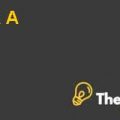Introduction
This report attempts to perform analysis on stock market data during the Republican and Democratic presidency and compare the performance of stock market during different presidency cycles. Empirical analysis would be performed and the findings would be supported by external data to examine the relationship between the stock market performance and the political cycles. For the purpose of Republican Presidency, we would be using the S&P500 stock market data during the tenure of George W. Bush’s Presidency and for the purpose of the Democratic Presidency; we would be using the S&P500 stock market data during the tenure of Barrack Obama’s Presidency tenure. After the discussion of the empirical findings, we discuss the sensitive firms and industries to these political cycles, advantages for the investors and exploitation of the opportunities during political cycles by the arbitrageurs.
Empirical Findings Based on Stock Market Data
The presidency of George Bush had started from January 20, 2001 and ended on January 20, 2009. In the same way, the presidency of Barrack Obama had started from January 20, 2009 and assuming that it ended on November 8, 2016, we have extracted the monthly S&P 500 stock market prices for both of these periods. First, we have computed the raw stock market returns during the Republican and Democratic presidency and generated the line plots (YahooFinance, 2016). These are depicted in figure 1 and 2 below:
Figure 1: Republican Stock Market Performance
Figure 2: Democratic Stock Market Performance
After this, we have computed a range of different risk and performance measures for both the presidential cycles, which are shown in the table below:
| RISK & PERFORMANCE MEASURES | ||
| Republican Presidency | Democratic Presidency | |
| Mean Stock Market Returns | -0.39% | 1.08% |
| Risk (Stdev) | 4.34% | 3.97% |
| Risk Free Rate (Assumed) | 0.25% | 0.25% |
| Sharpe Ratio | -14.79% | 21.03% |
| CV | -1107.5% | 366.0% |
Table 1: Risk & Performance Measures
Discussion of Empirical Findings
First of all, if we compare both the line graphs, then we can see that the performance of the stock market returns is better during the Democratic presidency as compared to the Republican presidency. During the Republican presidency of George Bush, the stock market had generated negative returns during many months. If we compare the mean returns during both the presidency tenures, then the mean return of stock market during Bush’s presidency is -0.39% with a risk of 4.34% and the mean return during Obama’s presidency was 1.08% with a risk of 3.97%. This corroborates our assertion that the stock market excess return is higher under the Democratic presidencies rather than Republican presidencies (Clara, 2003). This is also depicted in exhibit 1 for all the presidents in appendix.
The reason for this is clear and statistics show that at the end of the year 2015, the United States economy has grown to $ 17.9 trillion at the rate of 3.3% since 1949. However, this rate has stood at 4.8% during the presidential tenure of democratic presidents and 2.5% during the tenure of democratic presidents. If the democratic presidents were in the white house during the entire period since 1949, then the economy would have grown to $ 31.1 trillion and if only republicans have been in the white house then the economy would have grown to $ 11.1 trillion (Lazaroff, 2016).......................
This is just a sample partical work. Please place the order on the website to get your own originally done case solution.











